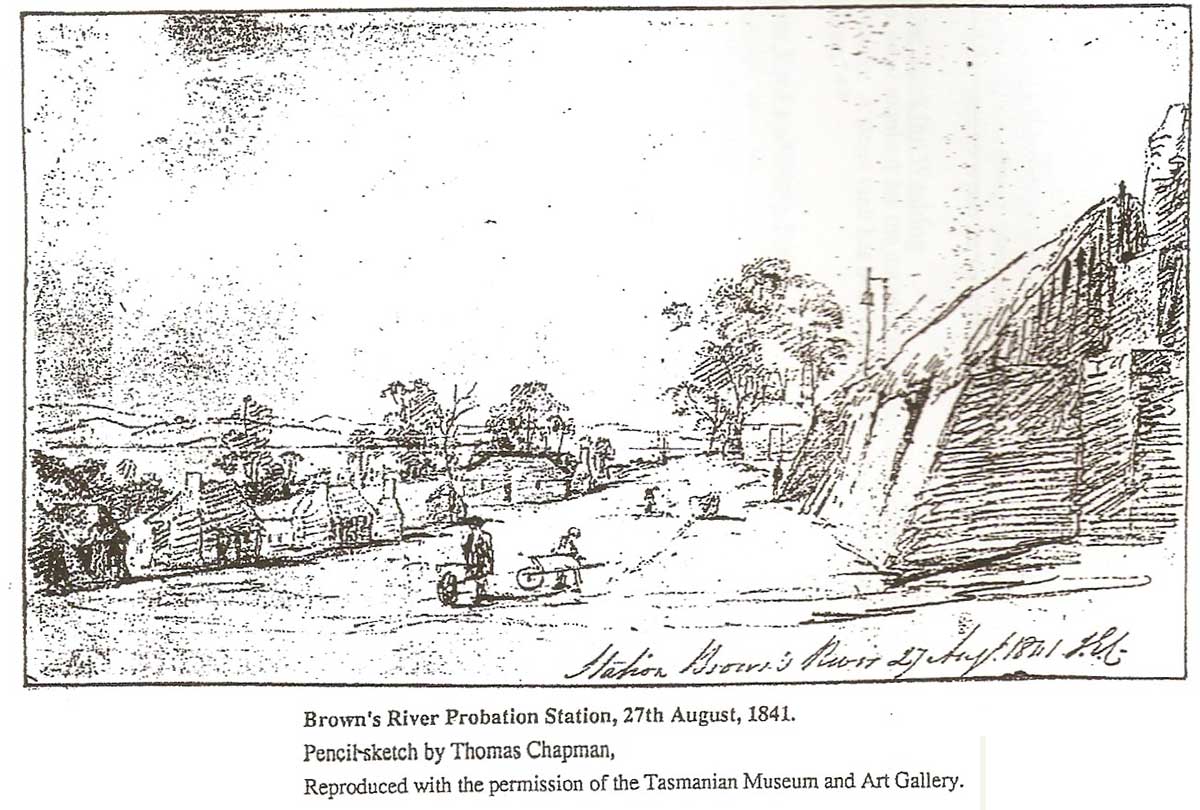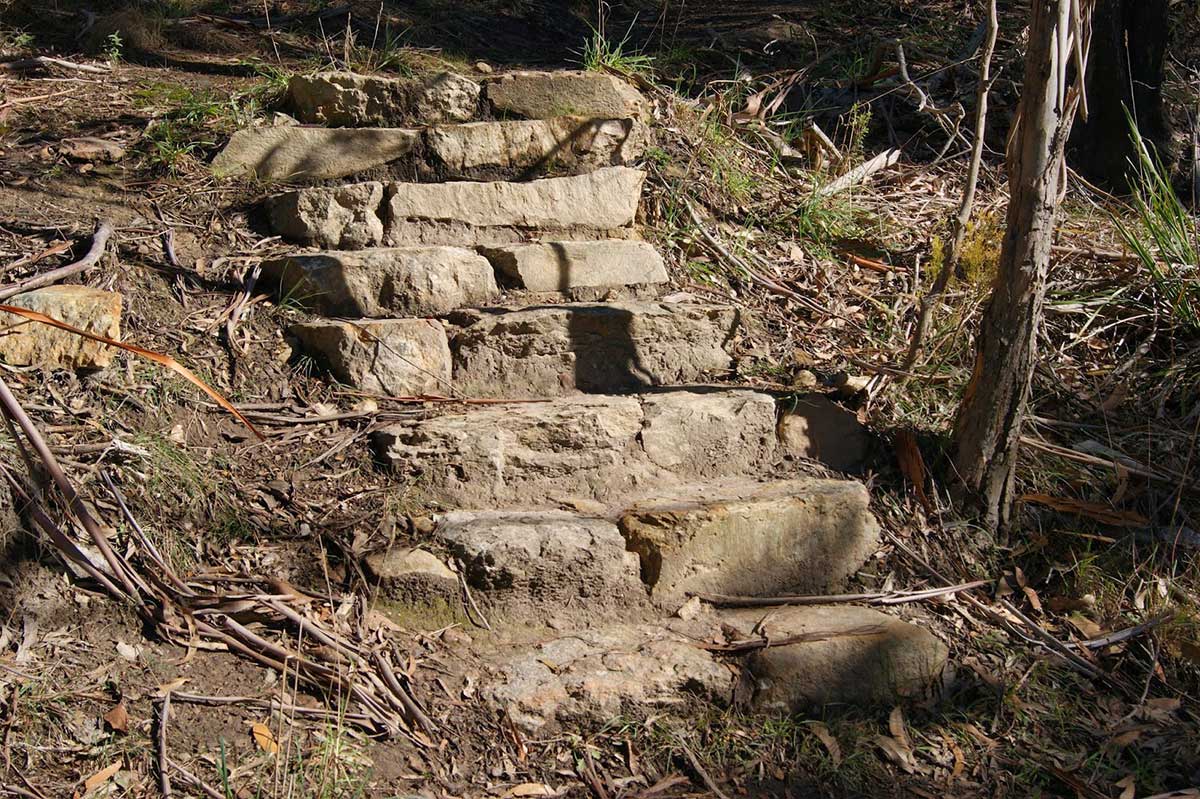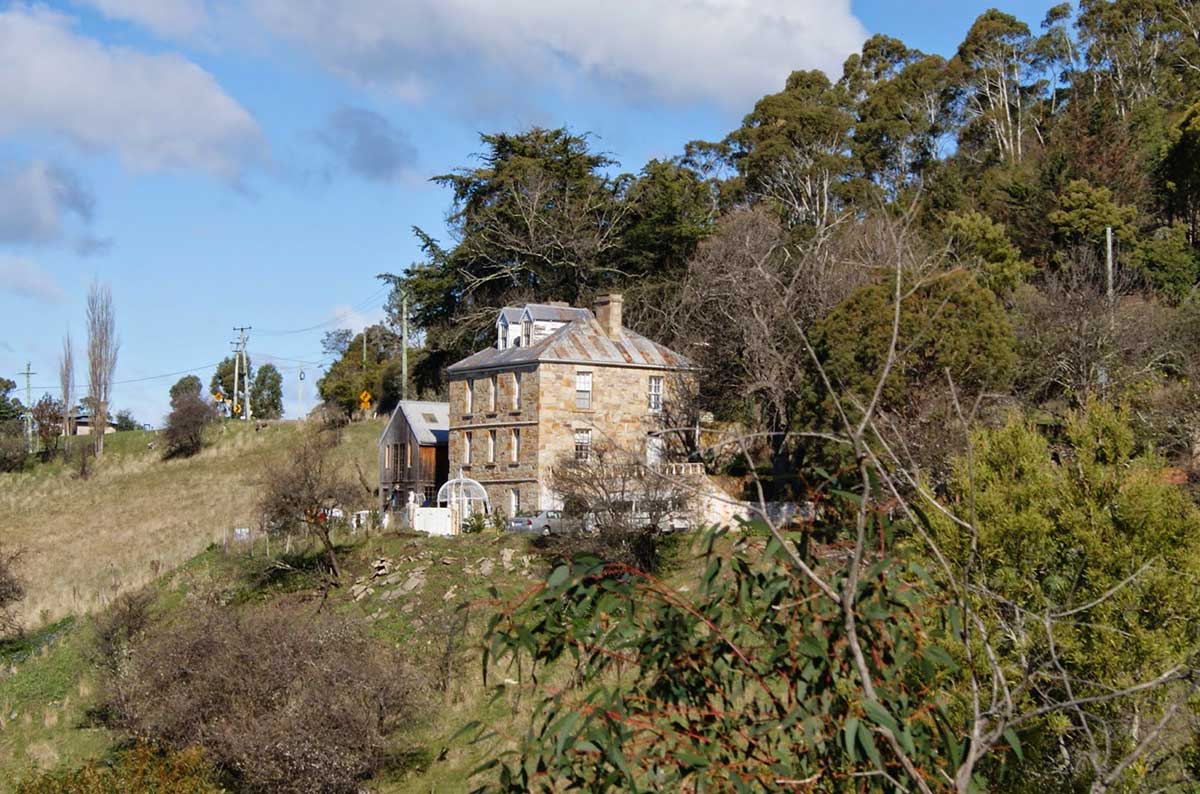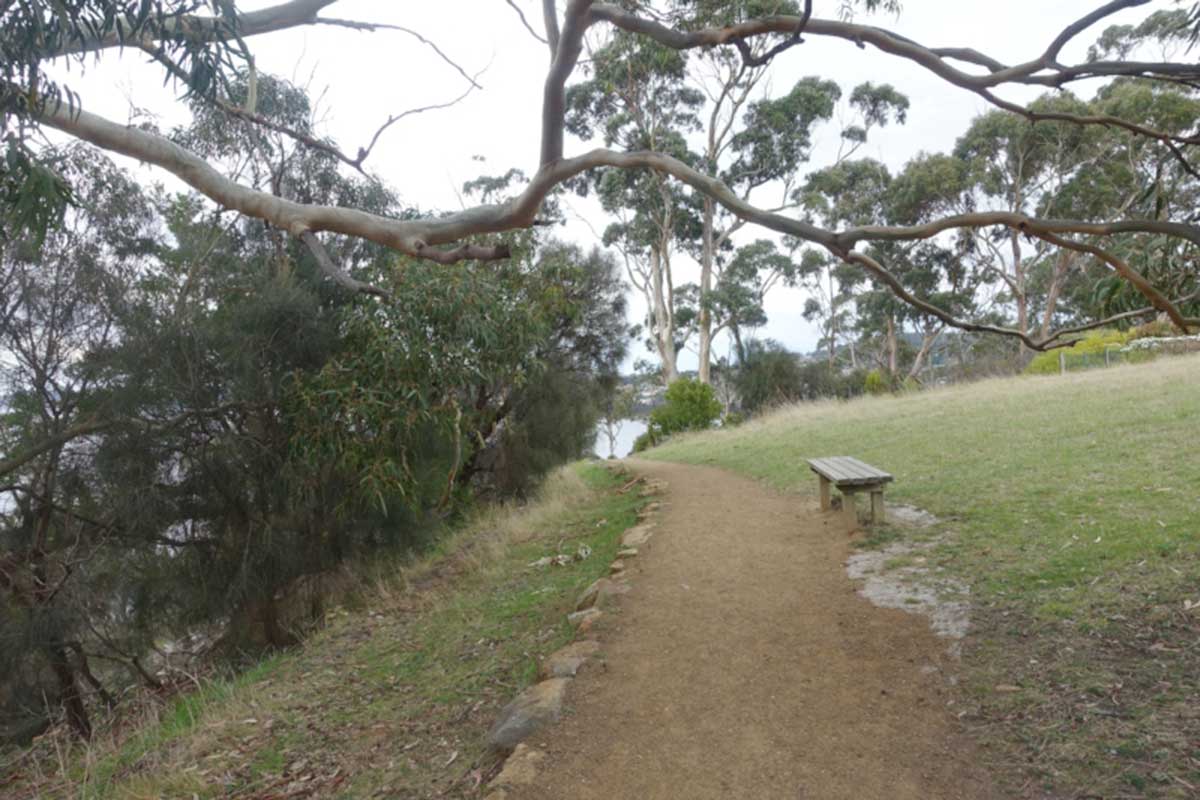Brown's River Probation Station, Taroona

The short-lived 1840s Brown's River Probation Station was built initially to provide a convict workforce in the area now known as Kingston. At its peak, the station housed about 370 prisoners, whose major task was to construct a road for horse and bullock-drawn vehicles between Hobart and Browns River (now Kingston) – the road we know today as Channel Highway. After that feat had been accomplished the number of convicts quickly dwindled and the station was closed in 1851.
It was the construction of the main Government sponsored road (Browns River Rd, now known as the Channel Highway) from Hobart to Kingston (then named Brown’s River) that necessitated the formation of a probation station. The probation station system was unique to Tasmania and the browns River Probation Station was one of the first stations to open. Stations provided convict labour for both public works in an outlying area, and also cheap labour for farmers and other industries opening up there. Many in their latter years became solely convict hiring stations.
Brown's River Probation Station was set out in 1838-39 by Daniel O'Connor, a Brown's River landowner and architect. A site was selected near present day Taronga Road and work began in July 1841. Only scattered ruins remain of the once sizeable convict outpost.

The five acre square site has a range of surviving features scattered on private and public land on either side of Taronga Road. These features are in varying condition and include sandstone quarries, foundations and retaining walls. stone washing tank, a stone boundary wall, a well, and a brick making area including the remnants of claypits and brick clamps. The only surviving related structure is Acton, (Acton, 434 Channel Highway), built in 1842 nearby on the Channel Highway, which was used as a residence for the Superintendent of the Probation Station.
At the station, the convicts were housed in purpose built dwellings along the ridge of Taronga Road and slightly down the north face. The station initially consisted of mainly timber buildings. In 1843, the buildings were noted as being of “a most miserable description”. A number of new buildings were built in 1843 and these were made largely of sandstone and brick. Many of the materials used to build the station were sourced locally. Other materials were bought by sea and bought up to the station site from a landing below the nearby Alum cliffs via a track.

Acton House
By 1843, the station is reported as consisting of the Superintendants House (Acton), a cook and bakehouse, two mess rooms, separate apartments for the convicts, solitary confinement cells, a track from the landing at the beach, a well, and a water tank for washing. It is presumed there was also a number of houses & barracks for the various officers & free men working at the station. There were also sawpits, quarries and a brick making area known as the Brickfields.
Work continued slowly during the next three years to bring the barracks up to its full complement. During the 1844-45 period, the station housed its greatest number of convicts, at its peak some 300 men and 67 staff.
After the road to Brown's River was finally completed in 1845, the station became a hiring depot and its numbers declined. By the next year it housed only 85 men, with a mere 43 convicts available for road parties. Numbers continued to decline and by 1850 the station was empty and left to decay.
Apart from the superintendants house, the most readily viewable remaining part of the station is the Brickfields brick making area. The Brickfields track has been constructed to provide an opportunity for pass through the site of the brickworks which provided the convicts with work and was predominately used to provide materials for the construction of buildings for the station.
More information

The Brickfields Track
The track has been constructed to protect the remaining relics in the heritage listed site with visitors utilizing a raised walkway in order to view the location of the original brick kilns and brick rubble are still present. Bricks, after their firing in the kilns, were transported via a path across the creek travelling north around the ridge to the main station site, located at the end of what now is Taronga Rd. The Brickfields Track links the Alum Cliffs track to Channel Highway.
The walk passes through the historic remains of the brick-making area, part of the nearby convict probation station. The station’s living quarters are now largely hidden in private properties along Taronga Road. The handsome 3-storey sandstone house (“Acton”) on Channel Highway, just north of the Taronga Road turn-off, was believed to have been the Superintendent’s House. About 30 years later, Joseph Moir, who built the Shot Tower across the valley, used the sandstone from the abandoned probation station, to build the Tower Factory (now gift shop/cafe).
